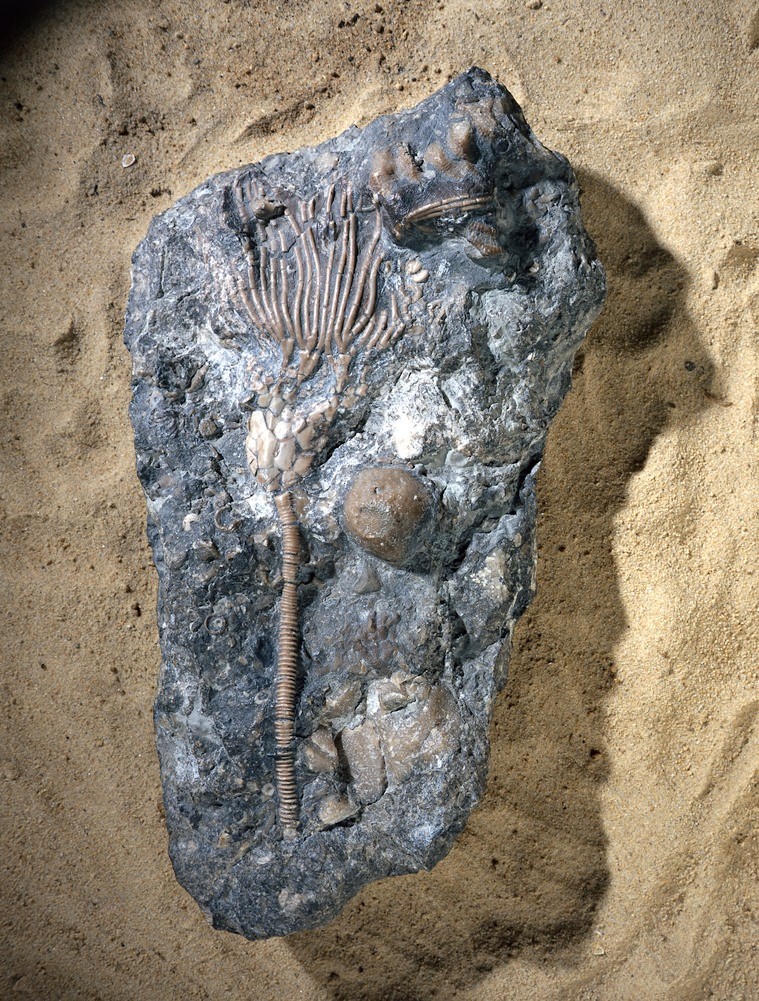| P number: | P550304 |
|---|---|
| Caption: | Periechocrinus, a fossil crinoid. |
| Description: | Whilst some animals, once evolved, live for many hundreds of millions of years before going into extinction, others lived for only a short time (geologically speaking) before dying out. Periechocrinus was one of the latter. This crinoid evolved and became extinct during mid Silurian times (about 425 million years ago). The illustrated specimen is from the Wenlock Limestone of Dudley, England. Periechocrinus has a conical cup, made up of many plates with ridges across them. Importantly it has a row of three plates where the cup is attached to the long stem and five plate immediately above. It also has a number of plates where the anal tube was situated. Periechocrinus has many branched arms, which direct food to the mouth at the top of the cup. Crinoids are an ancient group of animals that first appeared during the Cambrian times, over 500 million years ago, and can still be found living today. The animal lived in a cup-like structure ('calyx') made of numerous calcite plates. It had many arms ('brachials'), which waved in the sea water above the animal to collect food. The calyx of most crinoids is attached to a long flexible stem, made of a stack of calcite plates ('columnals'), that was anchored to the sea bed, sometimes by a holdfast. |
| Photographer: | Unknown |
| Copyright statement: | Unknown |
| Orientation: | Portrait |
| Size: | 640.23 KB; 759 x 1001 pixels; 64 x 85 mm (print at 300 DPI); 201 x 265 mm (screen at 96 DPI); |
| Average Rating: | Not yet rated |
| Categories: | Best of BGS Images/ Fossils |
Reviews
There is currently no feedback

